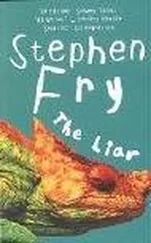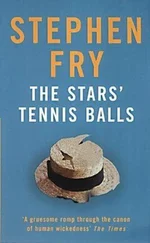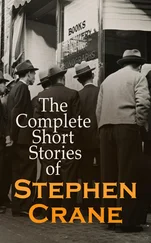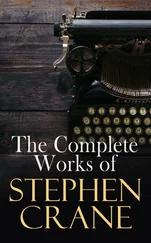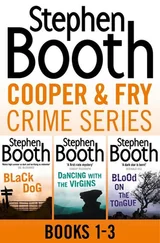‘Mr Fry! Mr Fry!’
I turned with what I hoped was a disarming smile, in reality seeking witnesses, policemen or an escape route.
The lunatic was holding up an apologetic hand.
‘I suddenly saw that you didn’t know what on earth I was talking about,’ he said, scarlet with exertion and embarrassment.
‘Well, I must confess…’
‘Speckled Jim!’
‘I’m sorry?’
‘You know, Speckled Jim!’
Said as if this would clear the matter up entirely.
And then it had indeed dawned.
This man was referring to an episode of a television series in which the character I played, General Melchett, court-martials the hero, Blackadder, for killing, roasting and eating Melchett’s favourite carrier pigeon, whose name was Speckled Jim.
At one point during the court-martial, which Melchett rather unsportingly chairs himself, he refers to Captain Blackadder in a loud splutter of mad rage as ‘the Flanders pigeon-murderer’. That was the phrase this man had been shouting across the street. Not bastard pigging murderer at all…
The strange thing about television is that you do it once and then forget about it, while some obsessed fans will watch programmes over and over again and end up knowing the scripts infinitely better than you ever did, even at the time of recording.
Another trap for the unwary comic writer lies in using proper names in sketches. Like many writers I tend to use local placenames as fictional surnames and the surnames of people I know as fictional placenames.
My assumption about the mole references then, had been that I had either appeared in some television programme with a mole, or that I had given the name ‘Cawston’ or possibly ‘Kett’ to such an animal. I racked my brains wondering what article I had ever written, or what commercial, sketch, sitcom, radio broadcast, film or play I had ever performed in that had even tangentially involved a mole: mole as small shovel-pawed mammal, mole as buried secret-agent, mole as drilling machinery, mole as unit of molecular weight, mole as melanoma or birthmark, I considered them all. Hugh Laurie and I had written a sketch about the kind of people who collect china plates with woodland voles on them, painted by internationally renowned artists and advertised in tabloid Sunday magazines. But it’s a far cry from a woodland vole to a dead mole, especially as the sketch hadn’t even been performed or recorded yet, let alone transmitted.
So it was not until John Kett asked whether I still retained a keen interest in moles or if I had found any dead ones lately that the threads of memory pulled themselves together and I realised at last what everyone had been talking about. Not that they had kept mentioning this bloody mole because it was the most exciting animal to have hit Cawston since the Black Death, nor because it was the hero of an anecdote of any especial weight or interest in the life of the village. I realise now what I couldn’t have known then – that they mentioned it because they had a little surprise planned for me and it would have been embarrassing for everyone, myself included, if I had forgotten the whole affair and reacted to their presentation ceremony with dumb puzzlement.
‘Fancy you remembering the mole,’ I said to John Kett as he led me up to meet the man in charge of the sound system (every village has one microphone and tape-recording expert). Once the PA had been explained and I had been shown twice where the switch on the microphone was, I asked John Kett if he in turn ever remembered an occasion when I had not dared to go into his classroom to give him some test results from Miss Meddlar.
He thought for a while and pulled an apologetic smile. ‘No, I’m afraid not,’ he said.
In John Kett’s past the sun shines and birds sing, in mine there are banks of black thundercloud eternally forming over my head.
I have on my lap as I type a rectangle of varnished wood, four holes neatly drilled into each corner for convenient hanging and display. It was the little surprise, my present from Cawston Village School, their thank-you to me for opening their fete.
In neat Olde English lettering, the following is written:
Ode to a mole
I didn’t ask to come here
I didn’t ask to go
But here I was
And off I went
With only a star for show
Cawston ‘89
Grand Summer Fair
I left Cawston Village School in the March of 1965 and arrived at Stouts Hill the following month, -the only new boy of that summer term.
Now it is September. Samuel Anthony Farlowe Bunce and a handful of others are the squits and the Stephen Fry who shouted ‘Miss, Miss!’ and giggled with the girls by the hopscotch court has died and in his place stands Fry, Fry, S. J., Young Fry, Fry Minor, Fry the Younger, Fry Secundus, Fry Junior or, worst of all, Small Fry.
Stouts Hill, as I have described, was a mock castle, its stone turrets and battlements standing on a mound that rose up from the village of Uley in the shelter of the Bury.
The school’s coat of arms sported a kingfisher, (reflecting perhaps both the school lake and the headmaster Robert Angus’s commitment to creating a halcyon youth for his young charges) beneath which on a scroll was written the school motto, Τοιςμελλουσι – to the future. The corpus studenti (since we’ve gone all classical) numbered just over a hundred, boys being divided into four Houses: Kingfishers, Otters, Wasps and Panthers. The dormitories were named after trees – Elm, Oak, Beech, Sycamore and Cypress.
A nightly spoonful of Radio Malt, a halibut liver oil capsule on the breakfast spoon (later replaced by the more palatable sugar-coated Haliborange), tuition in a musical instrument, riding, sailing, gliding, cubbing, elocution lessons, scouting, shooting and photography all counted as Extras and were surcharged on the termly bill in guineas. Stouts Hill accepted no day boys and the exceptionally grand uniform, which included the most wondrous herringbone winter coat (as worn by my brother, and perched upon by a monkey, in the photograph section in the middle of this book), Aertex shirts for summer, Clydella for winter, a cap, a boater, a grey suit for High Days and Church, blazers, V-necks, ties, games shirts, games pullovers, shorts, snake belt in school colours (optional long trousers for those aged ten and over) and the most fantastical numbers of games socks, uniform socks and regulation elastic garters for the upkeep of same socks, was to be ordered by parents exclusively from Daniel Neale’s in Hanover Square and latterly, when Daniel Neale went out of business, from Gorringe’s in Kensington High Street. All clothing was to be clearly marked with the owner’s name – good business for Messrs Cash and Company who had cornered the market in name-tapes in those days. The other essential item, naturally, was the tuck-box, the boy’s surname and initials to be printed in black upon the lid.
Aside from the Angus girls, the female presence included Sister Pinder who had a Royal Naval husband, a magnificent wimple, starched cuffs and an upside-down watch of the kind included in the nurse’s outfits little girls always want for Christmas. Her preferred method of punishment when roused was a sharp slap with a metal ruler on the hand – far less painful than it sounds. Her son John was about my age and bound, if I remember rightly, for Pangbourne Naval College. For all I know he is an Admiral of the Fleet today, although if most of my school contemporaries are anything to go by he works in the City, in advertising, commercial property, the film business or as a happily indigent carpenter (at a pinch ceramic artist) in Cornwall. Such is my generation. As in the Carry On films there was a Matron as well as a Sister; on my arrival the incumbent was a Mrs Waterston, called Matey or Matey Bubbles after a nursery bath-foam of the same name. She also had a nephew at the school, though I fear I remember very little about him. Assistant Matrons came and went on the summer breeze and the only one I recall with any vividness was a bespectacled blonde girl called Marilyn (in my entirely unreliable memory an evangelical Christian) who played the guitar and would, when begged, lullaby my dormitory to sleep with a song inexplicably about (unless I have gone entirely mad) El Paso. Marilyn won the heart of my brother Roger on a walking tour in the Isle of Wight one summer holiday: he returned with a glass lighthouse filled with layers of different coloured sand from Ryde and a much larger Adam’s apple than he had left with. The symbolism of the lighthouse is the kind of hackneyed detail that only real life has the impertinence to throw up. The school secretary, Mrs Wall, wore nice tweed suits and had a pleasantly citrus and peppery smell. I believe she went by the name of Enid. The school Chef was called Ken Hunt and his egg or chicken dishes were the consequent victim of endless spooneristic jokes, which I am sure you don’t need to have spelled out for you. He had two kitchen porters, Celia, hugely fat, hairy and Spanish, by whom I was overwhelmingly mothered throughout my time at Stouts Hill and her husband Abiel, almost as hugely fat, Spanish and hairy as his wife and quite as generous to me.
Читать дальше


